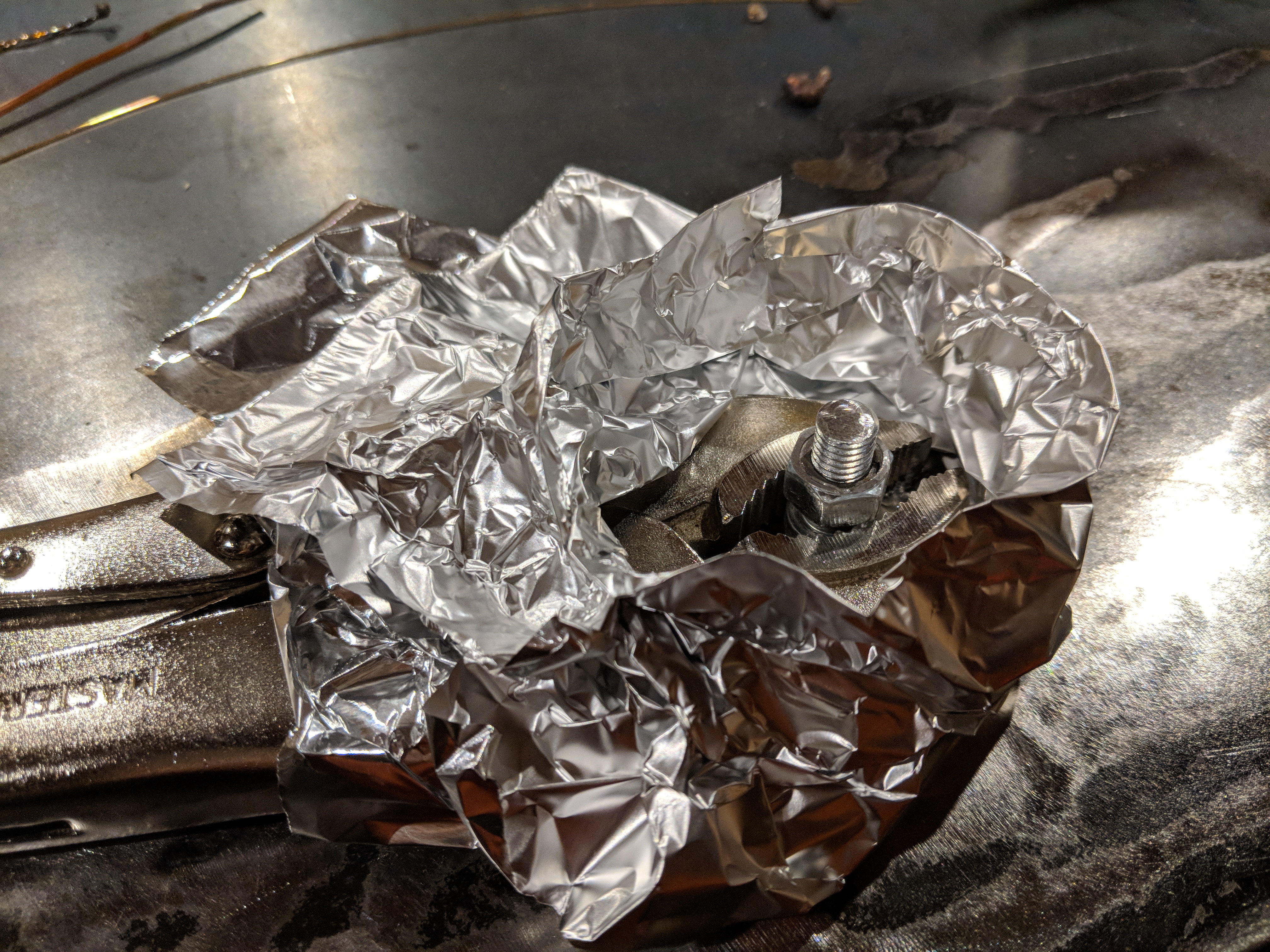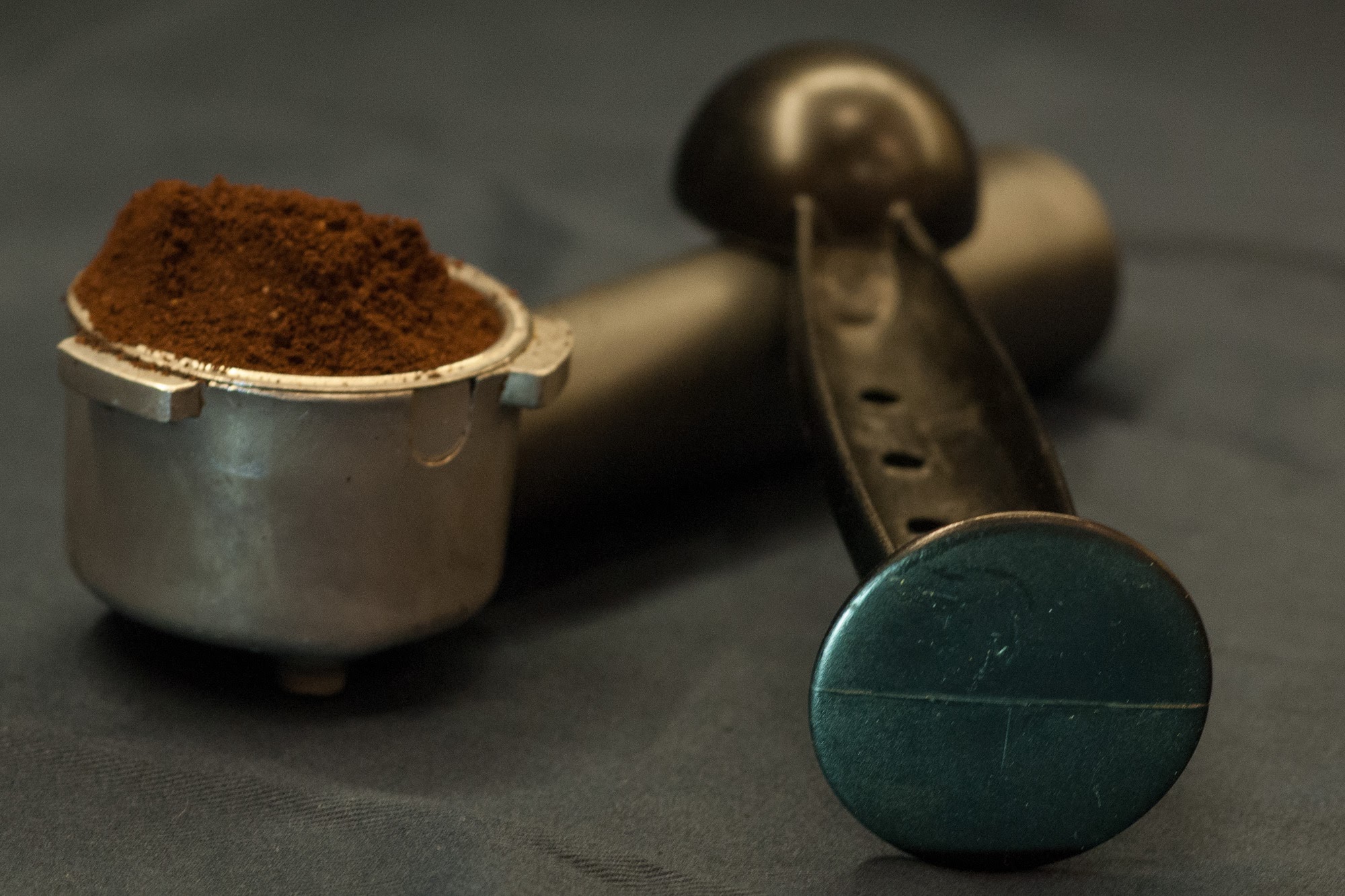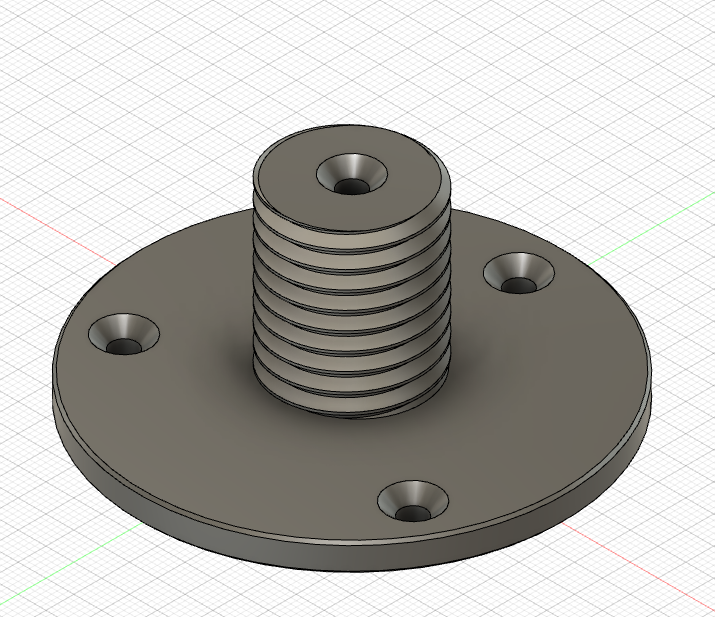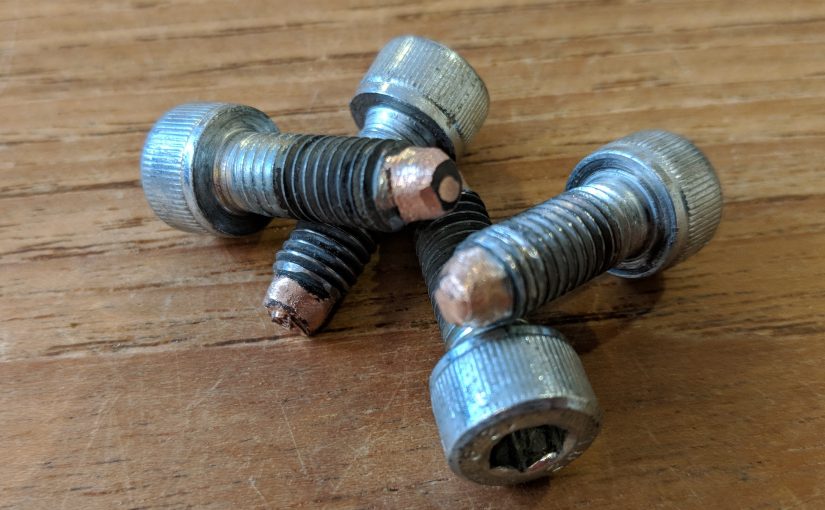I designed a simple 3D-printed mount that allows me to store my wood lathe chucks on the wall or any other vertical surface. I mounted mine on the wall of my wooden lathe stand. The mount is designed for 1″ 8TPI thread, but if you like the idea, it should be very easy to design the same mount for other spindle sizes.
Category: Turning
Making copper tipped chuck retention bolts
My wood lathe has no allowance to lock the chuck on the spindle, and yet that is a very useful feature, which gives you, for example, the ability to sand in reverse rotation. The spindle is threaded all the way to the shoulder. My chuck is a OneWay Stronghold, and its spindle adapter has two M8 threaded holes for securing it on a spindle with grub screws. The problem is that steel grub screws would damage the threaded spindle when tightened.
I thought I would make copper-tipped steel bolts that could be adequately tightened without the danger of damaging the spindle thread. I already had some M8 socket head bolts, and figured that I could TIG braze a piece of copper on their tips. I found it impossible to do because the copper piece melts before the silicon bronze filler. Copper’s melting point is just 1080°C, while ERCUSi filler melts at around 1800°C.
Then I tried a different approach, and it worked very well. I first “tinned” the tip of the screw using the silicon bronze filler, and then, while maintaining the silicon bronze puddle, switched the filler to copper wire (I used gauge 12 single strand electrical wire). The copper flowed very nicely into the silicon bronze puddle, and I was able to build up a big blob of copper on the tip of the bolt this way.
I used 30A DC Pulse setting, with 33 pps, 33% on time, 33% background, as recommended by Jody Collier. I held the bolt in vise grips and built a dam around with aluminum foil, to keep the shielding gas around the piece.

I threaded a nut around the bolt before brazing the tip on, so that it would be easier to grind the blob down, knowing that it does not impede the threading.
I am quite pleased with the results. I wonder how long it will take for the copper tips to be worn off. Building the copper up again should be fairly easy, when the do wear off.
Elm and stainless steel espresso tamper
My espresso machine came with a lovely plastic tamper, that looked like this:

I am not all that picky aesthetically speaking, but that tamper is absolutely ugly and does not fit the cup snugly enough. Its outer diameter is about 1/4″ smaller than the inner diameter of the espresso reservoir. I thought that making a new tamper would make an interesting turning project. Then I thought that the business end of the tamper had better be metal.


